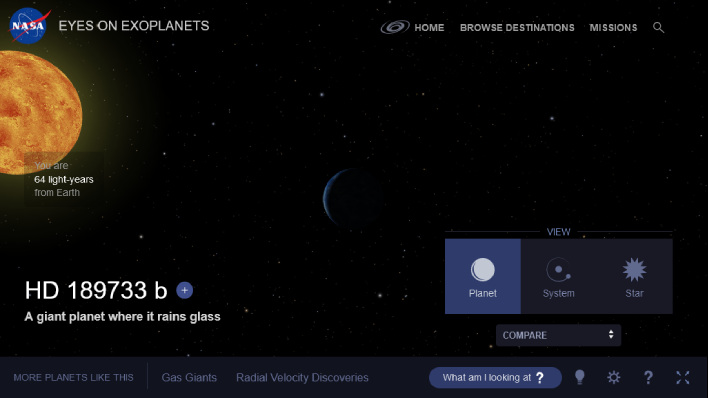NASA’s Space Telescope Spots A Planet With Deadly Glass Rain And A Rotten Egg Stench
Exoplanet HD 189733 b, first detected in 2005, is approximately 64 light-years from Earth, making it the closest “hot Jupiter” astronomers can observe passing in front of its star. While it may look like a mundane place to visit in artist's renditions, the planet is far from it. The planet is about 13 times closer to its star than Mercury is to the Sun, causing scorching temperatures in the 1700 degrees Fahrenheit range. Toss in the smell of rotten eggs and raining glass that blows sideways on winds of 5,000mph, and it would be easy to see why it will never make the top 100 places to visit in the Universe. However, the exoplanet has plenty to offer astronomers and scientists.
“Sulfur is a vital element for building more complex molecules, and like carbon, nitrogen, oxygen, and phosphate, scientists need to study it more to fully understand how planets are made and what they’re made of,” explained Guangwei Fu, an astrophysicist at Johns Hopkins University who led the research recently published in the journal Nature.
Fu added that while the existence of hydrogen sulfide was predicted, it was not confirmed until recently. He also made it clear they are not expecting to find traces of life on the planet because of its extreme temperatures, but detecting hydrogen sulfide on other planets will help provide a better understanding of how different types of planets form.
“Say we study another 100 hot Jupiters and they’re all sulfur enhanced. What does that mean about how they were born and how they form differently compared to our own Jupiter?” Fu remarked.
The team also measured levels of heavy metals like those on Jupiter, possibly helping scientists answer questions about how a planet’s metallicity correlates to its mass. An example is that of Neptune and Uranus containing more metals than that found in planets such as Jupiter and Saturn. This has lead some to hypothesize that planets like Neptune accumulate more ice, rock, and other heavy elements relative to gases like hydrogen and helium during early formation. This correlation has led scientists to try and find out if the same is true for exoplanets throughout the Universe.
Fu indicated his team plans on continuing to track sulfur in more exoplanets like HD 189733 b, and will try to figure out how high levels of that compound might influence how close they form near their home stars. “We want to know how these kinds of planets got there, and understanding their atmospheric composition will help us answer that question,” Fu explained.


